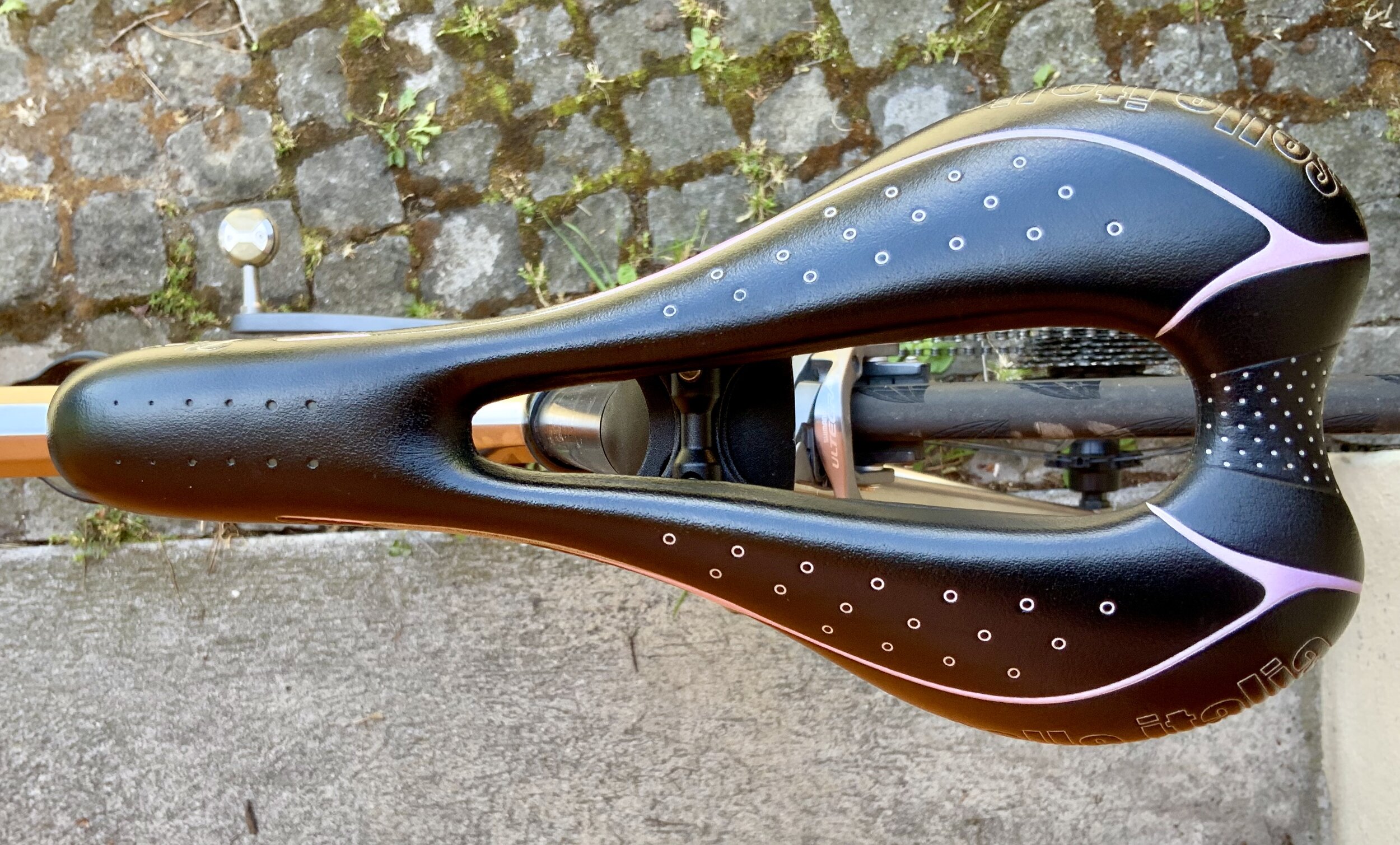How to Choose the Right Bike Saddle
Part II of III in the Saddle Series
Like the elusive Yeti, your perfect saddle is out there somewhere. Luckily, with some general guidance you should be able to narrow down the type of saddle you need before you fill your closet with 10 rejects.
In part I of the “Saddle Series” I discussed how to properly sit on a saddle, and how to identify if your discomfort is coming from your own physical limitations or is a result of the saddle itself. In this installment I’m going to dive deeper into how to go about finding the right saddle for you.
Make sure your bike fit is appropriate
It is impossible to find the best saddle for you if the rest your bike fit is otherwise incorrect, because how you sit on the saddle will change substantially with other changes to your position. Therefore, the first step is to make sure that your overall bike fit is appropriate. By appropriate I mean that the position on the bike reflects the capabilities of your body at this specific moment (i.e. your strength, flexibility, stability, and fitness). This doesn’t mean your goal fitness level or body weight at the end of the season, or the shape you were in 3 years ago after completing your first Ironman.
Your bike fit should also reflect the type of riding you do. The position that’s best for you when training for and competing in Gran Fondos is not the same position you’ll most likely appreciate during the course of a 2-week bikepacking trip in the desert. If you’re unsure if you need a bike fit, you can contact me to set up a full cycling assessment.
Determine your preferred pelvic position
In the previous blog I described proper pelvic position on the saddle. But realistically, there is some variability in how close we all come to that position. For example, a 65 year old man with tight hamstrings and an arthritic hip will have difficulty rotating his pelvis forward on the saddle, and he will end up sitting with more weight back on his ischial tuberosities (sit bones). His bike fit should reflect this lack of flexibility, and he should not have a significant amount of “drop” to his handlebars (see below). Because his weight is back on his ischial tuberosities, he’ll probably be comfortable with a saddle without a cutout in the nose because his weight isn’t predominantly there. Most cyclist riding bikes without a lot of drop will be comfortable on solid saddles.
On the contrary, a cyclist with more flexible hamstrings who can easily bend over and touch the floor, and who rides with more anterior (forward) tilt of the pelvis will place more pressure on the nose of the saddle and will probably want a cutout. Many road riders and criterium racers with a lot of drop to their handlebar will often appreciate a cutout like this. Triathletes in particular almost always prefer a saddle with a cutout, split nose, or something in between due to the predominant pressure on the pubic bones when in the aero position.
Road saddle with a large cutout
Fizik Aliante saddle without cutout (photo credit https://www.fizik.com/rw_en/aliante-gamma.html)
Find a saddle that fits your anatomy
Many saddle companies such as Fizik, Specialized, Selle Italia, and Ergon, have developed their own tools to measure the width of your ischial tuberosities. If you have access to a bike shop that carries these brands, they will be able to measure for you. If not, you can sit on a piece of corrugated cardboard or other impressionable material with your feet elevated on a stool and measure the distance between the divots created by your ischial tuberosities. Add 20-30mm to this measurement and this is the width saddle you’re looking for. Essentially you want to make sure that your sit bones are supported on top of the saddle, and are not hanging over the edges in order to prevent pudendal nerve compression.
The next, and more neglected, step involves finding a saddle nose with the right width, which is crucial for triathletes. It’s difficult to find the published width of many road saddles, but some tri saddles will list this information. Luckily the nose of most road saddles are amply narrow, but tri saddles can vary quite a bike. Finding the correct nose width is best done by actually trying out saddles on your bike. Even with a great bike fit, it can take a few long rides to know for sure if the saddle will work. I recommend finding a good local bike shop with a saddle exchange policy that will assist you with this. For triathletes who find ISM saddles too wide, I have had a lot of success with the Cobb Type 5 and Delta P.
Saddle material that matches your riding style
Brushed leather will help you stick in place on a road or gravel bike, but it can be a nuisance on a mountain bike when you’re constantly in and out of the saddle. Synthetic materials or leather with a smooth finish will help you easily slide on and off the seat.
It can also be helpful to consider your pedal stroke and fitness here. The more power you put into the pedals, the less pressure you put on the saddle. Therefore, faster riders do well with minimal padding and slower riders prefer more padding. But don’t go crazy – the padded seat on your grandma’s beach cruiser will only get in your way and can cause you to bounce and shift on the seat, causing chafing and other issues.
Last, but definitely not least, get good shorts! I cannot understate the importance of shorts that are snug and stay in place without bunching in the crease of your hips. For me, that means bibs all day. Good luck on your saddle quest!



